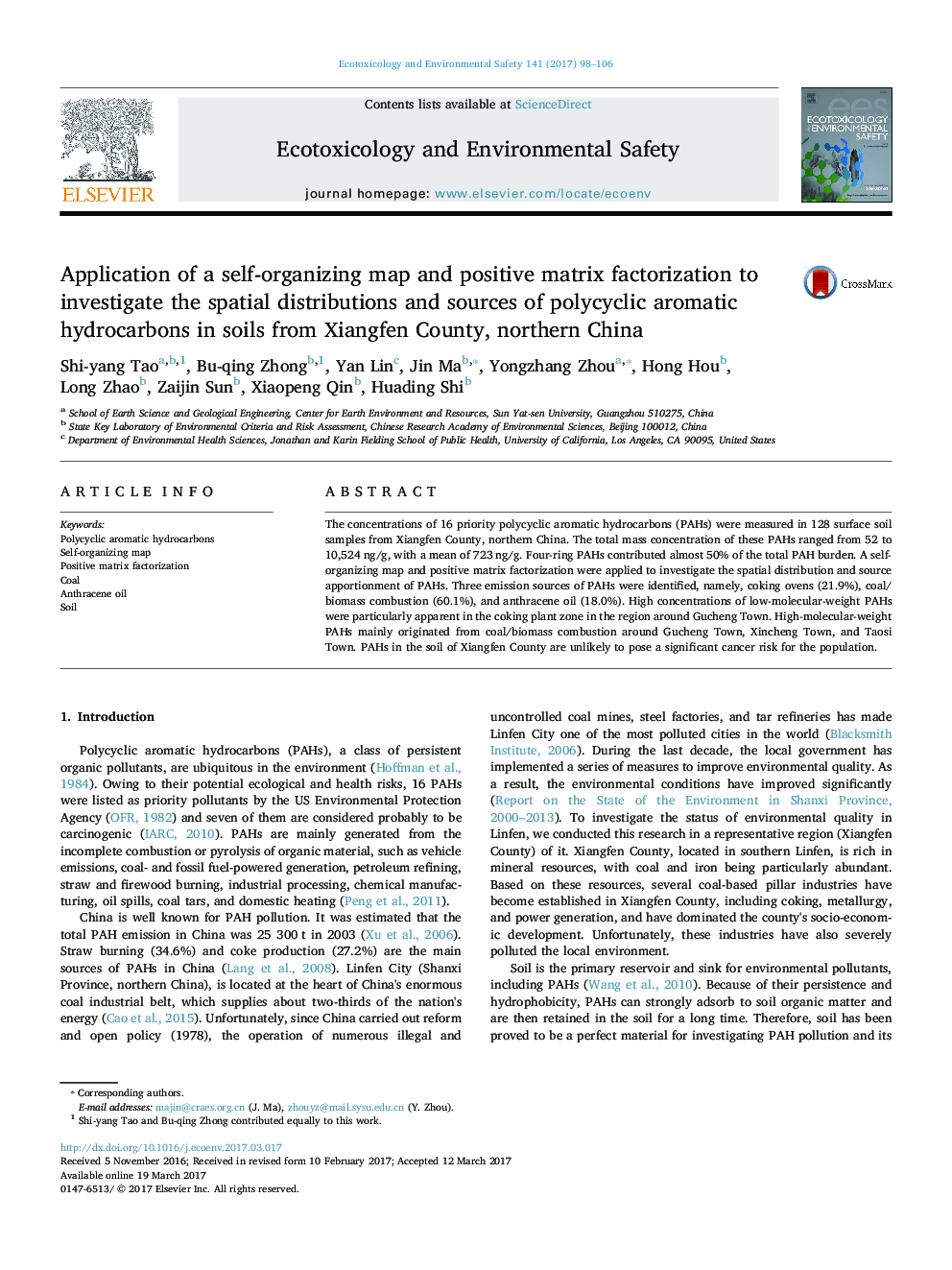| کد مقاله | کد نشریه | سال انتشار | مقاله انگلیسی | نسخه تمام متن |
|---|---|---|---|---|
| 5747926 | 1618923 | 2017 | 9 صفحه PDF | دانلود رایگان |

- SOM and PMF were simultaneously used to analyze spatial distribution and sources of PAHs.
- Coal and biomass combustion contributed 60.1% of the total PAHs.
- Anthracene oil production was found to be an important source of PAHs for the first time.
The concentrations of 16 priority polycyclic aromatic hydrocarbons (PAHs) were measured in 128 surface soil samples from Xiangfen County, northern China. The total mass concentration of these PAHs ranged from 52 to 10,524Â ng/g, with a mean of 723Â ng/g. Four-ring PAHs contributed almost 50% of the total PAH burden. A self-organizing map and positive matrix factorization were applied to investigate the spatial distribution and source apportionment of PAHs. Three emission sources of PAHs were identified, namely, coking ovens (21.9%), coal/biomass combustion (60.1%), and anthracene oil (18.0%). High concentrations of low-molecular-weight PAHs were particularly apparent in the coking plant zone in the region around Gucheng Town. High-molecular-weight PAHs mainly originated from coal/biomass combustion around Gucheng Town, Xincheng Town, and Taosi Town. PAHs in the soil of Xiangfen County are unlikely to pose a significant cancer risk for the population.
Journal: Ecotoxicology and Environmental Safety - Volume 141, July 2017, Pages 98-106